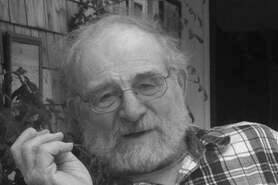While Alaskans argue about how to spend the income from the Alaska Permanent Fund — dividends versus government services — we are not paying enough attention to how the fund itself is managed.
It’s in trouble.
We spend close to a half-billion dollars annually in fees for outside investment managers to handle our $75 billion (2022 annual report, p. 31) . They get paid by beating so-called “benchmarks” even if their investments actually lose money, which is a little funny considering that the benchmarks are established by the same folks.
And the fund is losing money — and not only because of recent investments. The change to distributing the funds via a Per Cent of Market Value (POMV) system was done without the guardrails and fiscal rules that were proposed by Gov. Jay Hammond, who invented the permanent fund. By forgetting the laws on the books that forbid using “unrealized gains,” the POMV is pumped up so that the fund actually has an additional 20% more taken out than the official POMV limit of 5%.
The chief investor for the fund told the board of trustees that the state budget took close to a 6.5% last year.
Gov. Mike Dunleavy’s budget asks for a dividend of $3,800 this year. Considering inflation, that has the buying power of just $1,000 in 1980 dollars. In other words the dividend is not growing in real value.
But even more important is inflation’s affect on the fund itself. Inflation is “the thief in the night” warned banker Elmer Rasmusen when the fund was created, and the Legislature passed a law setting up a dividend formula that included returning to the fund from the earnings an amount equal to what was lost from inflation (using a two-year average).
But in recent years, the Legislature and governor have been passing annual appropriations that override that law. In 2022, only 2¼% was appropriated back to the fund. According to the U.S. Consumer Price Index, inflation was triple that, about 6 ⅔.
The governor is now proposing a 50-50 split between dividends and services. Jay Hammond called for a minimum 60% for dividends and strict controls on how that is calculated. But meanwhile, over time, the fund is less and less able to provide adequate earnings to pay for either dividends or services.
Larry Smith works with the Kachemak Resource Institute.


